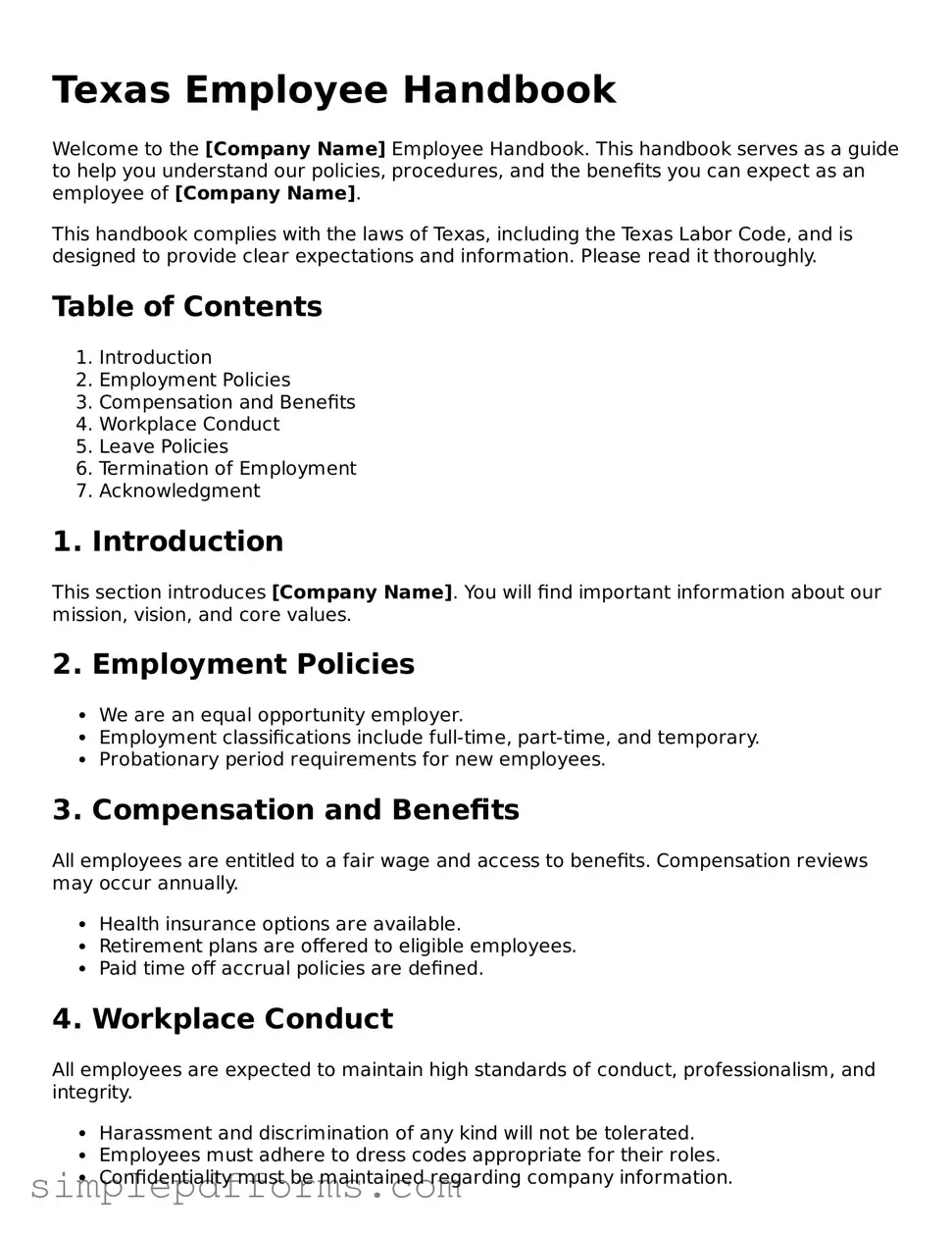Texas Employee Handbook
Welcome to the [Company Name] Employee Handbook. This handbook serves as a guide to help you understand our policies, procedures, and the benefits you can expect as an employee of [Company Name].
This handbook complies with the laws of Texas, including the Texas Labor Code, and is designed to provide clear expectations and information. Please read it thoroughly.
Table of Contents
- Introduction
- Employment Policies
- Compensation and Benefits
- Workplace Conduct
- Leave Policies
- Termination of Employment
- Acknowledgment
1. Introduction
This section introduces [Company Name]. You will find important information about our mission, vision, and core values.
2. Employment Policies
- We are an equal opportunity employer.
- Employment classifications include full-time, part-time, and temporary.
- Probationary period requirements for new employees.
3. Compensation and Benefits
All employees are entitled to a fair wage and access to benefits. Compensation reviews may occur annually.
- Health insurance options are available.
- Retirement plans are offered to eligible employees.
- Paid time off accrual policies are defined.
4. Workplace Conduct
All employees are expected to maintain high standards of conduct, professionalism, and integrity.
- Harassment and discrimination of any kind will not be tolerated.
- Employees must adhere to dress codes appropriate for their roles.
- Confidentiality must be maintained regarding company information.
5. Leave Policies
Employees are entitled to various types of leave, including:
- Sick leave
- Parental leave
- Vacation leave
6. Termination of Employment
This section outlines the procedures surrounding voluntary and involuntary termination. Employees must give appropriate notice based on their position.
7. Acknowledgment
I, [Employee Name], acknowledge that I have read and understood the [Company Name] Employee Handbook.
Date: [Date]
